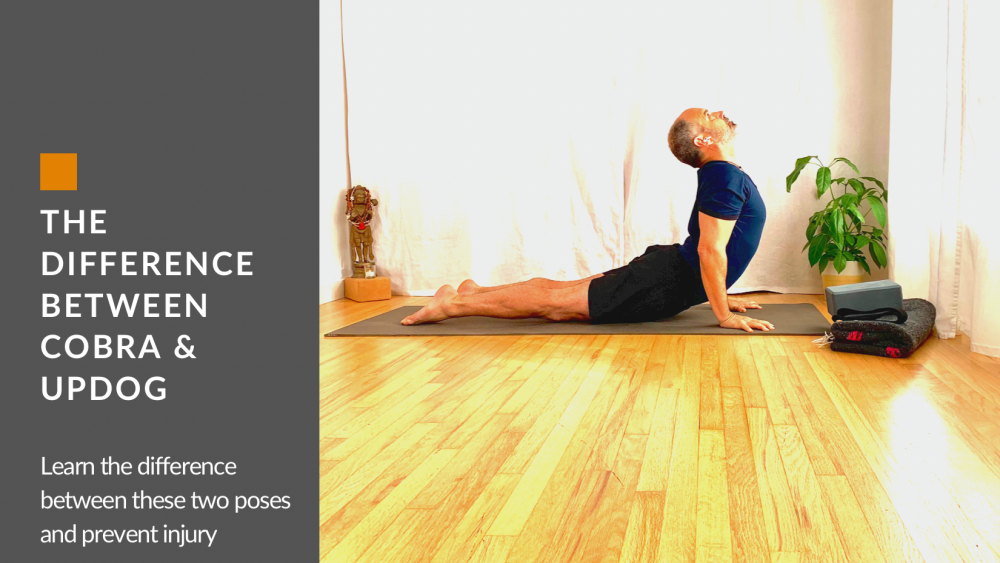

This is one of the most asked questions I get in classes: “What is the difference between these poses?” My answer is never a short one. It always involves a full stop of class to demonstrate the major and important differences between them. To start, I rarely EVER teach Upward Facing Dog to new students and for a good reason: they can’t do it – properly, that is. Both are backbends. Both strengthen the arms and upper body. Both improve extension of the spine. However, if performed incorrectly, both can injure your wrists, shoulders and lower back.
The mid back or thoracic spine is the tightest part of our back. Its natural curve is kyphotic (“hump” in Greek) or towards the back. However, if the muscles are weak it could lead to kyphosis – an abnormal rounding or hunching – over time. One of the most difficult things to do in practice is create flexibility in that area. It takes strong back muscles, strong arms and shoulders to attain it. The shoulders must stay behind the collar bones for good posture. As soon as the heads of the shoulders go forward of the collar bones the upper back tends to hunch, the head moves forward and tension builds in the neck. But, if you now add weight bearing to this misalignment it can be dangerous. Most students think cobra is some lesser pose; one taught to weak students who are newer to yoga. There is nothing weak about cobra when done properly.
The major alignment differences between them are that in cobra the arms are bent and the pelvis and thighs remain on the floor. In upward dog. The arms are straight and the pelvis and thighs are lifted off the floor. But the back is much harder to bend with straight arms and usually the student just cranks their head back thinking it’s the same thing. The other misalignment is that both poses are “pulling poses”. What I mean by that is when you lift into the backbend, your hands pull your chest forward and up. Most push backwards towards the feet therefore creating hinging in the lower back and thus compression.
Lastly, with straight arms and forward rounding shoulders, it puts unsupported weight into the wrist joints and creates pain. Without proper instruction and constant cueing from the teacher, a good habit will not be built into the student and bad habits will form as well as injury. I will be doing a short video about these postures to demonstrate proper practice.
Remember: alignment and breath are the most important parts of the pose, not whether or not you can get yourself into it. Movement without alignment doesn’t work out well in practice. Students usually injure themselves. I am in the injury prevention business. I couldn’t care less if you can bring your feet to your head or stand on your arms for days. What impresses me is attention to detail, consistent practice guided by breath and learned alignment.
